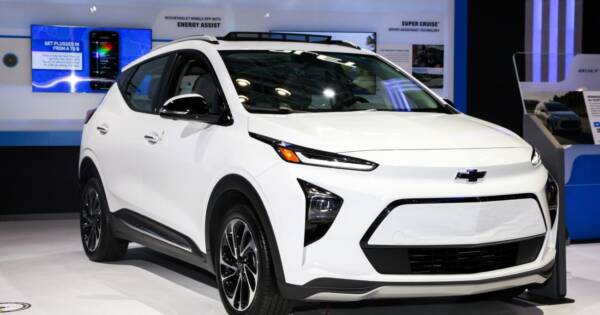A lot can change in a year, especially in the auto industry. It seems 2021 is winding up to be an interesting year for consumers and manufacturers due to the unprecedented events that have taken place in 2020. Some changes that have already been made this year could drag into the next, such as manufacturing delays and alternatives to traditional car buying.
There are some major things to know if you’re thinking of buying a vehicle next year. From style to pricing to availability, here are some trends consumers have to look forward to for 2021.
 SUPHANAT KHUMSAP / Shutterstock
SUPHANAT KHUMSAP / ShutterstockTwo-Tone Paint
Carmakers have been reinspired by 1950s automotive designs. More than half a dozen SUVs have come out with two-tone paint options these past couple years — and that trend is continuing going into 2021. Since more than three in four vehicles sold in North America are either white, silver, gray, or black, this is a refreshing change from what the roads have seen in recent years.¹
Now, consumers can play around with the look of their vehicle for an extra few hundred dollars. This typically involves painting the roof and a splash of color below the fender, side mirrors, or around the lights. This gives drivers some more personalization options. You can design your vehicle to stand out from the rest, instead of blending in with the overwhelming monochromatic colors on the road.
Some vehicles that have introduced two-tone paint jobs include the:
- Hyundai Venue and Kona crossovers;
- Kia Seltos;
- Chevrolet Trailblazer;
- BMW Mini Cooper, and;
- Land Rover Range Rover.
Convenient Car Shopping From Home
It might become less necessary to visit your local dealership once 2021 comes. As U.S. search results for “dealership near me” are down 20 percent, dealerships are looking for new ways to engage with consumers to make sales. One of those ways is by bringing the dealership experience to their homes.
There’s a lot of uncertainty going into 2021, which is why at-home service could still be offered or even become a new norm. One consumer research survey had shoppers rank their preferences for alternatives to dealer visits. Here are the preferences ranked:
- At-home test drive.
- Review videos.
- Digital showroom.
- Online configurator.
- VR test drive.
- Videoconference.
Not only are people wanting to browse and learn more about vehicles without stepping foot onto a dealership, but many also want to shop online for vehicles as they would clothes or food. In fact, 18 percent of auto shoppers would buy a vehicle sooner if there was an online purchase option.²
This means people want to search, browse, build, and have their car delivered straight to their home. We’ll have to see whether or not dealerships adjust their traditional selling tactics to meet these modern preferences from customers.
Delays in New Vehicle Releases
The auto industry has seen sales slow down. In response, manufacturers have pushed back 2021 vehicle production in an effort to sell off the existing 2019 and 2020 models still unsold. New models and redesigns are typically released late summer. However, out of the 38 expected to be launched from automakers, 12 have been delayed within 2020 and 12 have already been pushed into 2021.³
Depending on how things go in sales, there’s a strong chance that consumers will have to wait longer for 2021 models to be available for purchase. The good news is there haven’t been any public cancelations of expected new models. Is it possible for this delay to extend into 2022 production models? Only time will tell, and that’s something you’ll have to wait and see once 2021 is in full swing.
Deals on 2020 Models
As the new year rolls around, so do the latest vehicles from automakers. Manufacturers and dealerships will be shifting their priority from 2020 models to 2021 lineups. What does that mean for consumers? Promotions and incentives are likely to be offered by salespeople eager to get rid of their existing inventory. This could be in the form of no-interest financing for six to seven years or no-penalty payment deferments.
Sellers will have to make room on the lot for 2021 vehicles once manufacturers officially start production. This can mean big savings for customers who want a new vehicle but can settle for current year models for 2020 instead of spending more on next year’s models. Try waiting to buy a vehicle until the end of 2020 when discounts are most prominent.⁴ That way, you’ll be saving money on a current model as the newer ones come in sooner after.


